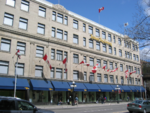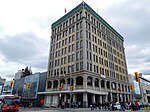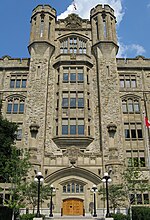The Canada Revenue Agency (CRA; French: Agence du revenu du Canada; ARC) is the revenue service of the Canadian federal government, and most provincial and territorial governments. The CRA collects taxes, administers tax law and policy, and delivers benefit programs and tax credits. Legislation administered by the CRA includes the Income Tax Act, parts of the Excise Tax Act, and parts of laws relating to the Canada Pension Plan, employment insurance (EI), tariffs and duties. The agency also oversees the registration of charities in Canada, and enforces much of the country's tax laws.From 1867 to 1999, tax services and programs were administered by the Department of National Revenue, otherwise known as Revenue Canada. In 1999, Revenue Canada was reorganized into the Canada Customs and Revenue Agency (CCRA). In 2003, the Canada Border Services Agency (CBSA) was created out of the CCRA, leading to customs being dropped from the agency's mandate and the agency's current name.
The CRA is the largest organization in the Canadian federal public service by number of personnel, employing 43,908 people and has an operating budget of $5.1 billion as of the 2018–19 fiscal year. The agency's headquarters are based in Ottawa, itself divided into five program branches, which directly support the CRA's core responsibilities, and seven corporate branches, which deliver internal services within the organization. The CRA also has operations throughout the rest of Canada, including 4 Tax Centres (TCs), 3 National Verifications and Collections Centres (NVCCs), and 25 Tax Services Offices (TSOs), organized into four regions: Atlantic, Ontario, Quebec, and Western.
During the 2017 tax year, the CRA collected approximately $430 billion in revenue on behalf of federal and provincial governments, and administered nearly $34 billion in benefits to Canadians.The CRA is responsible to Parliament through the minister of national revenue (Diane Lebouthillier since 2015). The day-to-day operations of the agency are overseen by the commissioner of revenue (Bob Hamilton since 2016).










